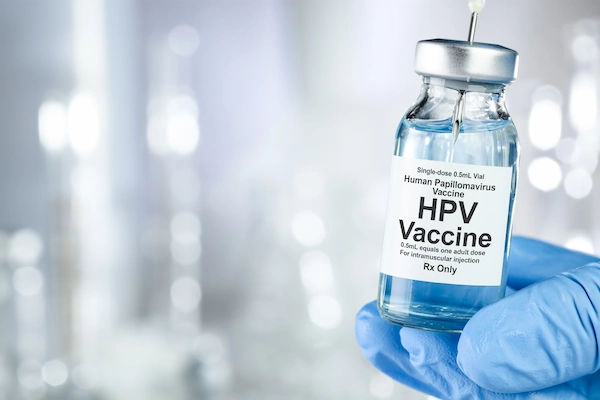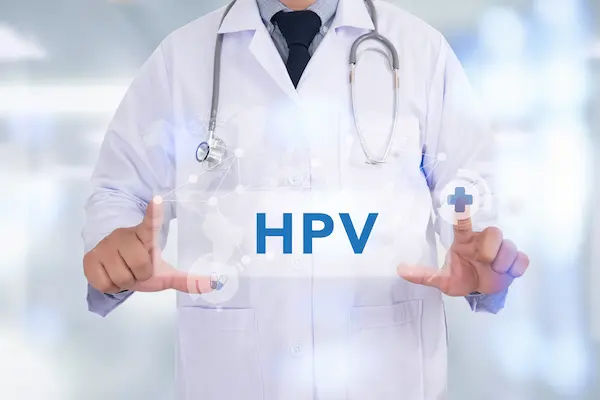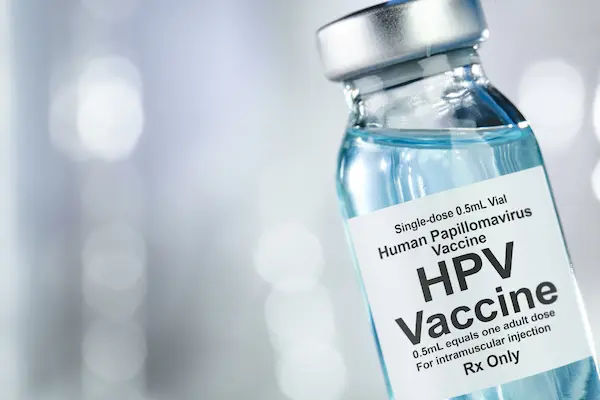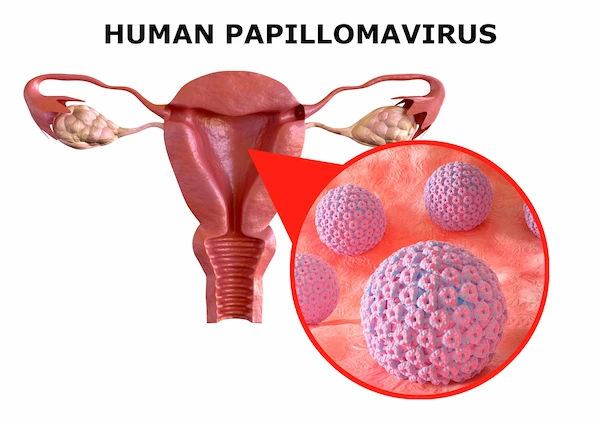HPV-Positive Detection in a Cervical Smear: What It Means and Next Steps
Understand what a positive HPV detection in a cervical smear means, the difference between Pap and HPV tests, and the next steps for monitoring, treatment, and prevention.

Written by Dr. Mohammed Kamran
Reviewed by Dr. Rohinipriyanka Pondugula MBBS
Last updated on 24th Sep, 2025

Introduction
Receiving a call from your doctor about a positive HPV detection in your cervical smear can be an anxiety-inducing experience. Your mind might immediately jump to the worst-case scenario. But here’s the most important thing to know: a positive HPV test is incredibly common and is far from a diagnosis of cervical cancer. In fact, it's a powerful tool for prevention. This guide is designed to demystify your results, explain what "HPV positive" truly means for your health, and walk you through the logical next steps. We’ll break down the science of HPV, the difference between an HPV test and a Pap smear, and how modern medicine has a clear, effective plan for managing positive detection to keep you healthy and safe.
Understanding HPV and Its Link to Cervical Health
What is Human Papillomavirus (HPV)?
Human papillomavirus (HPV) is the most common sexually transmitted infection (STI) globally. Nearly all sexually active men and women will contract at least one type of HPV at some point in their lives, often without ever knowing it. The virus is so prevalent that it’s considered a normal part of being sexually active. HPV is a skin-to-skin infection with over 100 different strains, each identified by a number. Most of these strains are harmless and cause no symptoms, with the immune system typically clearing the infection within one to two years naturally.
High-Risk vs. Low-Risk HPV Strains
The key distinction in HPV typing is between low-risk and high-risk strains. Low-risk HPV types (like HPV 6 and 11) are responsible for genital warts but are not associated with cancer. High-risk HPV types, however, can lead to changes in cervical cells that, if persistent over many years, can develop into cancer. There are about 14 high-risk types, with HPV 16 and HPV 18 being the most dangerous, causing approximately 70% of all cervical cancers. The primary goal of cervical screening is to detect the presence of these high-risk strains.
Consult an Obstetrician and Gynaecologist for the best advice
The Cervical Screening Process: Pap Smear vs. HPV Test
Understanding the difference between your screening tests is crucial to interpreting your results.
The Pap Test (Smear): Looking for Cell Changes
A Pap smear, or Pap test, is a cytology test. During your pelvic exam, your doctor collects a small sample of cells from your cervix. These cells are then examined under a microscope in a lab. The pathologist is looking for any abnormalities in the cells' size, shape, or appearance—changes known as dysplasia. A Pap result tells you if abnormal cells are present now, but it doesn't identify the underlying HPV virus causing those changes.
The HPV Test: Detecting the Virus Itself
The HPV test is a molecular test. It analyses the same cell sample (or sometimes a separate one) to detect the presence of high-risk HPV DNA. It doesn't look at the cells' structure; it hunts for the genetic code of the virus itself. This makes it highly effective for identifying an infection before it has caused any visible cell changes, allowing for earlier intervention.
Co-testing: The Gold Standard for Detection
Many healthcare providers now use co-testing, which performs both a Pap smear and an HPV test on the same sample. This dual approach provides the most comprehensive picture of your cervical health. It can identify both the presence of the high-risk virus (HPV test) and any cellular abnormalities it may have caused (Pap test), guiding the most precise next steps.
Decoding Your Results: What "HPV Positive" Really Means
Your specific course of action depends on the combination of your HPV and Pap results.
HPV Positive, Pap Normal
This is one of the most common results. It means a high-risk HPV strain has been detected, but there are no abnormal cell changes on your cervix. This indicates a very early-stage infection that your immune system will likely clear on its own. The standard protocol is to repeat co-testing in one year. No immediate further procedures are needed, as the body often handles the infection naturally.
HPV Positive, Pap Abnormal (ASC-US, LSIL, HSIL)
This combination indicates that the HPV infection is active and has begun to cause changes to the cervical cells. The level of abnormality, classified on your Pap report, determines the urgency.
Understanding ASC-US and LSIL Results
ASC-US (Atypical Squamous Cells of Undetermined Significance): This is a very mild change, often linked to an HPV infection. It’s essentially a "maybe" result.
LSIL (Low-Grade Squamous Intraepithelial Lesion): This indicates mild cell changes caused by HPV. Both ASC-US and LSIL often resolve spontaneously.
In both cases, the next step is typically a colposcopy to get a closer look at the cervix and determine if a biopsy is needed.
Understanding HSIL Results
HSIL (High-Grade Squamous Intraepithelial Lesion): This signifies more serious pre-cancerous changes. These cells are less likely to resolve on their own and have a higher potential to develop into cancer if left untreated. A colposcopy and biopsy are always recommended.
Next Steps After a Positive HPV Detection
The Colposcopy Procedure Explained
If your results warrant it, your gynaecologist will recommend a colposcopy. This is a simple in-office procedure where a special magnifying instrument (a colposcope) is used to examine your cervix closely. The doctor applies a mild vinegar solution to the cervix, which causes abnormal areas to turn white, making them easier to see. If any suspicious areas are identified, a tiny tissue sample (a biopsy) is taken. While the word "biopsy" can sound scary, the cervical tissue has few nerve endings, and the discomfort is usually minimal, often described as a sharp pinch or cramp.
Follow-Up Testing and Monitoring Schedules
The results of your biopsy will guide your path forward:
Normal/CIN 1 (Mild Dysplasia): Often, just continued monitoring with more frequent Pap/HPV tests is required, as the body may clear it.
CIN 2 or CIN 3 (Moderate to Severe Dysplasia): These are considered pre-cancers and usually require a minor treatment to remove the abnormal cells, preventing them from progressing to cancer.
Treatment Options for Pre-Cancerous Cell Changes
Treatments for pre-cancerous cells are highly effective and minimally invasive, often preserving fertility.
LEEP (Loop Electrosurgical Excision Procedure)
This is the most common treatment. A thin, wire loop heated by an electrical current is used to remove the abnormal tissue from the cervix. It’s a quick procedure, often done in the doctor's office under local anaesthesia.
Cryotherapy and Other Procedures
Cryotherapy freezes and destroys the abnormal cells. Other methods include laser therapy or a cold knife cone biopsy (CKC), which removes a cone-shaped piece of tissue. Your doctor will recommend the best option based on the size and location of the abnormal area.
Prevention and Proactive Health: Beyond the Test
The HPV Vaccination: A Powerful Preventive Tool
The HPV vaccine (Gardasil 9) is a monumental advancement in cancer prevention. It protects against the nine major HPV strains (7 high-risk and 2 low-risk). It is recommended for preteens (ages 11-12) but can be administered up to age 45. It is still beneficial even if you are already HPV positive, as it can protect you from other strains you haven't been exposed to. If you have questions about the vaccine, consult a doctor online with Apollo24|7 to see if it's right for you.
Regular Screening: Your Best Defense
The entire purpose of this process is prevention. Cervical cancer develops very slowly, over many years. Regular screening ensures that any potential problems are found at the pre-cancerous stage when they are 100% treatable. Adhering to your doctor's recommended screening schedule is the single most important thing you can do for your cervical health.
Conclusion
A positive HPV detection is not a cause for panic but for proactive management. It is a sign that the vigilant screening system is working exactly as intended—catching potential issues early when they are easiest to address. Modern gynaecology has a clear, effective, and stepped roadmap for every possible result, from monitoring to minor treatment. This process has dramatically reduced cervical cancer rates, turning what was once a leading cause of cancer death in women into a largely preventable disease. Your health is in your hands. Stay on top of your recommended screenings, discuss the HPV vaccine with your provider, and always reach out to your healthcare professional with any concerns. If you’ve received an abnormal result and need to discuss next steps, you can book a physical visit to a gynaecologist with Apollo24|7 for a comprehensive evaluation and peace of mind.
Consult an Obstetrician and Gynaecologist for the best advice
Consult an Obstetrician and Gynaecologist for the best advice

Dr Jaya Kumar Agarwal
Obstetrician and Gynaecologist
25 Years • MBBS , DGO , DNB (obstetric and gynecology) DGE diploma in Gyne endoscopy (Germany )
Delhi
Apollo Hospitals Indraprastha, Delhi

Dr. Vineet Mishra
Infertility Specialist
36 Years • MD, Phd, DSc
Ahmedabad
Apollo Hospitals - Gandhinagar, Ahmedabad, Ahmedabad

Dr Bhawna Garg
Gynaecological Oncologist
26 Years • MBBS, MS, (PGI MS ROHTAK) FELLOWSHIP GYNECOLOGY ONCOLOGY, (CANCER INSTITUTE CHENNAI)
Delhi
Apollo Hospitals Indraprastha, Delhi

Dr. Korimilli Nisha
Obstetrician and Gynaecologist
10 Years • MBBS, MS (Obstetrics and Gynaecology)
Bansdroni
Siddhita Healthcare., Bansdroni

Dr. Susmita Basu
Obstetrician and Gynaecologist
19 Years • MBBS, DGO, MD Anatomy
Kolkata
MCR SUPER SPECIALITY POLY CLINIC & PATHOLOGY, Kolkata
More articles from HPV infection
Frequently Asked Questions
1. Can an HPV positive result ever be a false positive?
While HPV tests are highly accurate, no test is perfect. False positives are rare but possible. This is why follow-up testing, like a repeat test or colposcopy, is used to confirm findings before any major treatment is considered.
2. If I have HPV, does my partner need to be tested?
There is no approved HPV test for men. Since HPV is extremely common and usually clears on its own, partner testing is not standard practice. The focus is on managing the health of the person with the positive detection through regular screening.
3. How can I help my body clear an HPV infection?
While no specific treatment exists to eliminate the virus, maintaining a healthy immune system is key. This includes eating a balanced diet, not smoking (smoking significantly hinders the body's ability to clear HPV), managing stress, and getting adequate sleep.
4. Does a positive HPV detection affect pregnancy?
Having HPV generally does not affect your ability to get pregnant or have a healthy pregnancy. If you have had a procedure like a LEEP, your doctor will monitor your pregnancy, as it can slightly increase the risk of cervical incompetence or preterm birth in some cases.
5. How often should I get screened after a positive test?
Your follow-up schedule depends entirely on your specific results. It could be a repeat test in 1 year, 3 years, or 5 years. It is crucial to follow your doctor's personalised recommendations exactly.




